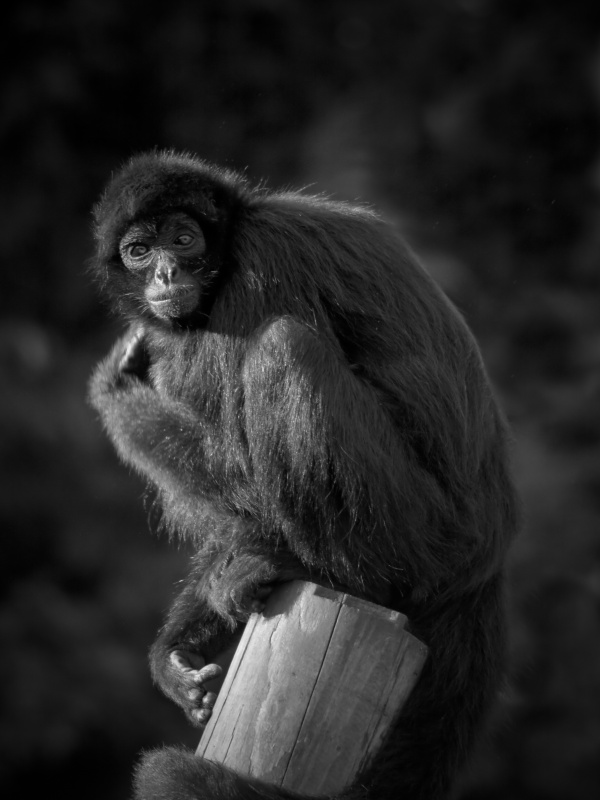Facts About Colombian spider monkey
The Colombian spider monkey is a fascinating primate belonging to the New World monkey group and is specifically found in Colombia and Panama. It’s often considered a subspecies of the Black-headed spider monkey, although debate persists among experts as to whether it should be classified as a distinct species or as a subspecies of Geoffroy's spider monkey. This ongoing debate adds a layer of complexity to its taxonomic classification.
These primates typically inhabit various forest types at elevations ranging from 2,000 to 2,500 meters above sea level. They are easily identifiable by their entirely black bodies and the distinctive white fur on their chins, which differentiate them from the Brown-headed spider monkey.
One of the most remarkable aspects of the Colombian spider monkey is its anatomy. They possess long limbs, lack thumbs, and have a highly flexible, prehensile tail that functions as a fifth limb. The tail has a hairless patch at the tip, perfect for gripping, and marked with unique patterns similar to human fingerprints. These monkeys typically weigh up to 9.1 kg and primarily consume fruits, although their diet also includes leaves, nuts, seeds, bark, insects, and flowers. By eating fruits and excreting undigested seeds, they play a crucial role in seed dispersal, essential for the well-being of their forest habitats.
Colombian spider monkeys are social creatures, often forming groups of up to 30 members. However, when foraging for food, they typically break off into smaller units of 3-4 individuals. They navigate the forest using a hand-over-hand technique known as brachiation, which enables them to move efficiently through their environment.
On average, a Colombian spider monkey can live up to 24 years. Their social structure and dietary habits are vital for maintaining the balance of forest ecosystems. By dispersing seeds and contributing to forest regeneration, these monkeys play an indispensable role in their natural habitats.

 Peru
Peru